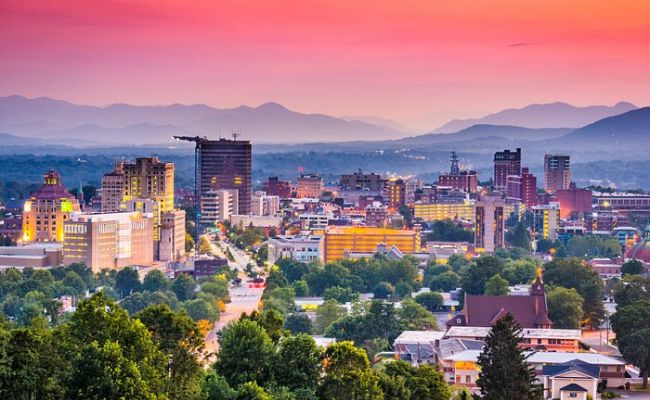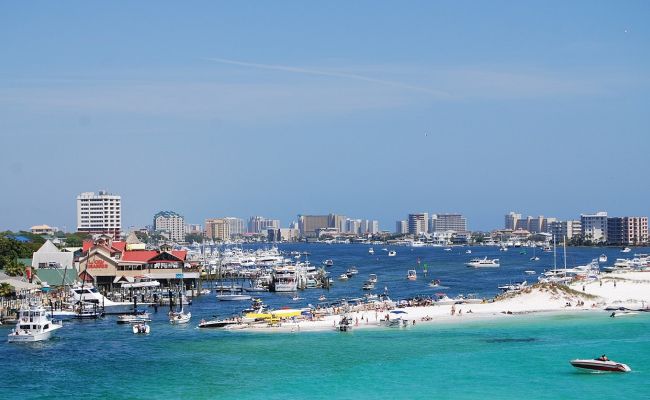Table of Contents
Largest States by Population in the U.S. in 2022!
For a number of reasons, traveling to other nations within the United States can be interesting and enjoyable. This article is for people who are curious and want to learn a bit more about the nation in which you live. To mention a few, comprehend their culture, history, beliefs, and religion.
States further inland, such as those in the Midwest and Great Plains, typically have lower population densities.
With the most inhabited cities, California is by far the most populated state in the United States.
Nearly 40 million people call it home, making up 12% of the nation’s total population.
First, without further ado, here is a list of the 10 States in the United States of America with the most population.
- California (Population: 39,613,493)
- Texas (Population: 29,730,311)
- Florida (Population: 21,944,577)
- New York (Population: 19,299,981)
- Pennsylvania (Population: 12,804,123)
- Illinois (Population: 12,569,321)
- Ohio (Population: 11,714,618)
- Georgia (Population: 10,830,007)
- Carolina (Population: 10,701,022)
- Michigan( Population: 9,992,427)
10. Michigan
Two different peninsulas make up Michigan, which also borders four Great Lakes (the Lower Peninsula and the Upper Peninsula).
Given its proximity to the Great Lakes and other smaller interior lakes, it has developed into one of the states with the highest concentration of yachting.
This state was listed by the Census Bureau as having a population density of 176.64 people per square mile.
Despite “growing up,” the population of Michigan, according to Michigan Radio, is nonetheless constrained by declining birth rates.
| Population: | 9,992,427 |
| State Capital: | Lansing |
| Major Cities: | Detroit, Grand Rapids, Warren, Sterling Heights, Lansing, Ann Arbor, and Flint |
| Fact: | Michigan is considered the U.S. automotive industry capital, with several major car companies. |
9. North Carolina
From the Appalachian Mountains to the Atlantic, North Carolina is a vast state with a diverse population and a thriving economy.
North Carolina placed fourth in terms of absolute growth and tenth in terms of percentage growth between 2018 and 2019, according to the most recent Census data.
According to the Carolina Population Center, North Carolina has seen a growth of over 100,000 new residents for the past four years.
North Carolinians have a lower average life expectancy than Americans as a whole.
Men in North Carolina lived an average of 75.4 years in 2014, according to the Institute for Health Metrics and Evaluation, compared to a national average of 76.7 years.

In North Carolina, the average age of women was 80.2 years, while the national average was 81.5 years.
| Population: | 10,701,022 |
| State Capital: | Raleigh |
| Major Cities: | Raleigh, Durham, Chapel Hill, Charlotte, Asheville, Greensboro, Winston-Salem, Wilmington, Cary, High Point Fayetteville |
| Fact: | North Carolina’s motto “first in flight” references the Wright Brothers’ strides in aviation. Their plane “Kitty Hawk” marked the first flight in the U.S., which took place in North Carolina’s Outer Banks. |
8. Georgia
Georgia’s capital, Atlanta, is seeing the fifth-largest growth in the country.
It is housed by two significant corporations, Lines and Coca-Cola.
The U.S. Census Bureau reports that Georgia has enticing tourist destinations and the 17th greatest population density in the nation with 184.61 people per square mile.
The Atlanta Journal-Constitution reports that a large portion of the population resides in and around Columbus and Atlanta.
According to the most recent U.S. census data, its population expanded slightly by more than 106,000 between 2018 and 2019, placing it among the ten states with the highest rate of population growth in the country.
| Population: | 10,830,007 |
| State Capital: | Atlanta |
| Major Cities: | Atlanta, Columbus, Savannah, and Athens |
| Fact: | Thanks to the generous tax credits for film productions, Georgia is now a major hub for the film industry. |
7. Ohio
Large rural areas and several large cities may be found in Ohio, which is known for its Buckeye trees (i.e., Columbus, Cleveland, and Cincinnati).
The Ohio State Buckeyes are a football team, and there are 286.07 persons per square mile in Ohio.
According to WOSU Public Media, Ohio’s population growth has slowed and even decreased over the past few years.
But there has been a sharp rise in population in Columbus in recent years.
According to WOSU Public Media, Columbus, which has a population of 1,644,000 as of the most recent census in 2019, is “one of the largest numerical gains in the country.”
| Population: | 11,714,618 |
| State Capital: | Columbus |
| Major Cities: | Columbus, Cleveland, Cincinnati, Toledo, Akron, Dayton, Parma, Canton, and Youngstown |
| Fact: | Ohio is famous for being a “swing state” during national elections |
6. Illinois
Illinois, home to the Abraham Lincoln Presidential Library, top business school, and best museum, is frequently referred to as “the Land of Lincoln.”
Over 2 million people live in Chicago, one of Illinois’ most populous cities.
Between 2010 and 2019, the state’s “population” decreased by 168,700.
According to U.S. Census Bureau data, Illinois’ population declined by 51,250 between 2018 and 2019.

Belleville is the most populated town in Illinois, according to the most recent census, which had 41,585 residents.
| Population: | 12,569,321 |
| State Capital: | Springfield |
| Major Cities: | Chicago, Springfield, Aurora, Rockford, Joliet, Naperville, and Peoria |
| Fact: | Illinois is nicknamed as “The Prairie”. |
5. Pennsylvania
Pennsylvania played a significant part in shaping American history.
The Declaration of Independence and the United States Constitution both refer to Philadelphia as the capital city of Pennsylvania.
Today, it is among the top financial states for a number of Fortune 500 corporations.
The ninth-most populous state is this one.
Pennsylvania has a population density of 286.12 persons per square mile, according to U.S. Census Bureau statistics.
There is a sizable population in and around Philadelphia, one of Pennsylvania’s largest cities.
In the largest city, there are more than 1.5 million residents.
| Population: | 12,804,123 |
| State Capital: | Harrisburg |
| Major Cities: | Philadelphia, Pittsburgh, Allentown, Erie, Reading, Scranton, Lancaster, Bethlehem, Levittown, and Harrisburg |
| Fact: | This state is officially a commonwealth, an old term that refers to the “common weal” or well-being of the public. |
4. New York
The largest and most populated city in the nation is New York.
One of the major economic, commercial, and cultural hubs on the planet is this iconic metropolis.
The city of New York is home to a sizable international population. New York has a sizable population, yet its population is still declining year after year.
New York, according to the United States Census Bureau, was one of ten states that lost citizens between 2018 and 2019—roughly 76,790 people.
| Population: | 19,299,981 |
| State Capital: | Albany |
| Major Cities: | New York City, Buffalo, Rochester, Yonkers, Syracuse, and Albany |
| Fact: | New York City makes up almost half of the entire Population. |
3. Florida
If you’re seeking warm, pleasant winters, Florida is where you’ll find them.
With one of the largest beaches and an average temperature of 75 degrees between January and February, South Florida is the first area to be happy with year-round beach weather.
According to data from the US Census Bureau, Florida has a population density of 400,52 people per mile.

According to the U.S. Census Bureau, Florida ranked second in population growth between 2018 and 2019 with 233,420 new inhabitants in only one year.
| Population: | 21,944,577 |
| State Capital: | Tallahassee |
| Major Cities: | Tallahassee, Orlando, Miami, Tampa, Jacksonville, St. Petersburg, Hialeah, and Fort Lauderdale |
| Fact: | The Florida Everglades, visited by over one million people every year, is the largest tropical wilderness east of the Mississippi River. |
2. Texas
The second-largest state in the union is Texas (after California).
Dallas-Fort Worth and Greater Houston are the fourth- and fifth-largest metropolitan statistical areas in the U.S., respectively, and Houston is the fourth-most populated city in the nation.
Its population density per square kilometer is 109.9.
After the American Civil War, Texas had a protracted period of economic stagnation before regaining its federal government representation.
| Population: | 29,730,311 |
| State Capital: | Austin |
| Major Cities: | Houston, San Antonio, Dallas, Austin, Fort Worth, Irving, Plano, and Corpus Christi |
| Fact: | The popular Texas slogan, “Don’t Mess with Texas,” comes from a 1990’s anti-littering advertising campaign, according to The New York Times. |
1. California
California has several attractions, including beaches, enormous redwood trees, a thriving technology sector, and a thriving entertainment sector.
With a population density of 253.64 persons per square kilometer, it is one of the more liberal states.
According to the Public Policy Institute of California, California is home to one in eight Americans.
According to the estimate, California’s population will be close to 45 million by 2050.
The Top Ten Largest States by Population in the United States are what these are all about
| Population: | 39,613,493 |
| State Capital: | Sacramento |
| Major Cities: | Los Angeles, San Diego, San Jose, San Francisco, Fresno, Sacramento, Oakland, Santa Ana, and Anaheim |
| Fact: | If California were a country, it intends to be the sixth-largest economy globally, according to the World Economic Forum. |
Also read:
Maria Shriver Dating Beside Married Status! Has Boyfriend Or Engaged?
Everything You Need To Know About CBS Journalist Major Garrett
Conclusion!
So let’s take a short look at the 10 most populous states in the United States of America.
The usual suspects at the top of the list, such as New York and California, didn’t really surprise us.
We intend to examine these states in the ensuing years to observe how the emigration, mortality, and birth rates of their respective positions change over time.




